How High-Tech Mirrors Can Send Heat Into Space
In the small rear suite of a light industrial building near the San Francisco airport, Eli Goldstein looks over a set of silver panels tilted on metal racking. The panels look like simple mirrors, but as Goldstein walks around them, he points out the black water pump along the left edge, the copper pipes running beneath the surface, and the metal box at the base.
What his company, SkyCool Systems, has built is a cooling technology that can act as a condenser—a standard component of any commercial air-conditioning or refrigeration system that lowers the temperature of incoming refrigerant, converting it from a vapor to a liquid. But instead of relying on electric fans, as condensers typically do, this one relies upon advanced materials that can draw away heat and release it into the upper atmosphere or even into outer space.
Goldstein and his fellow cofounder, Aaswath Raman, believe the Stanford spinout’s panels could significantly decrease the costs and energy demands of air-conditioning and refrigeration. That would ease one of the biggest drains on the electrical grid, and one of the most significant sources of greenhouse-gas emissions.
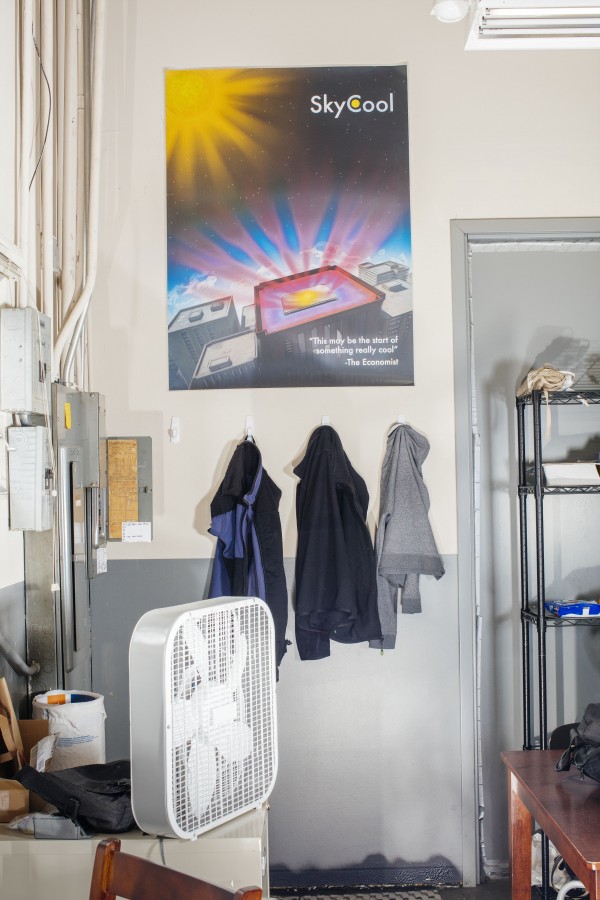
SkyCool’s workspace in Burlingame, California.
Leah Fasten
All objects give off heat in the form of thermal radiation. But the air around them, mainly in the form of water molecules, absorbs and radiates back a portion of the heat. A sliver of the emissions in the mid-infrared range, however, can slip past these compounds, enabling surfaces that emit radiation at those wavelengths to become cooler than the surrounding air. The Stanford researchers developed a thin film that was tuned to radiate infrared heat in exactly this band. The bigger advance, however, was coupling those radiative properties with reflective ones, enabling the materials to throw back nearly all the heat in sunlight. Without this second capability, the sun would more than offset the cooling effect during the daytime.
The team recently demonstrated that the panels could cut an office building’s cooling electricity needs by 21 percent in summer.
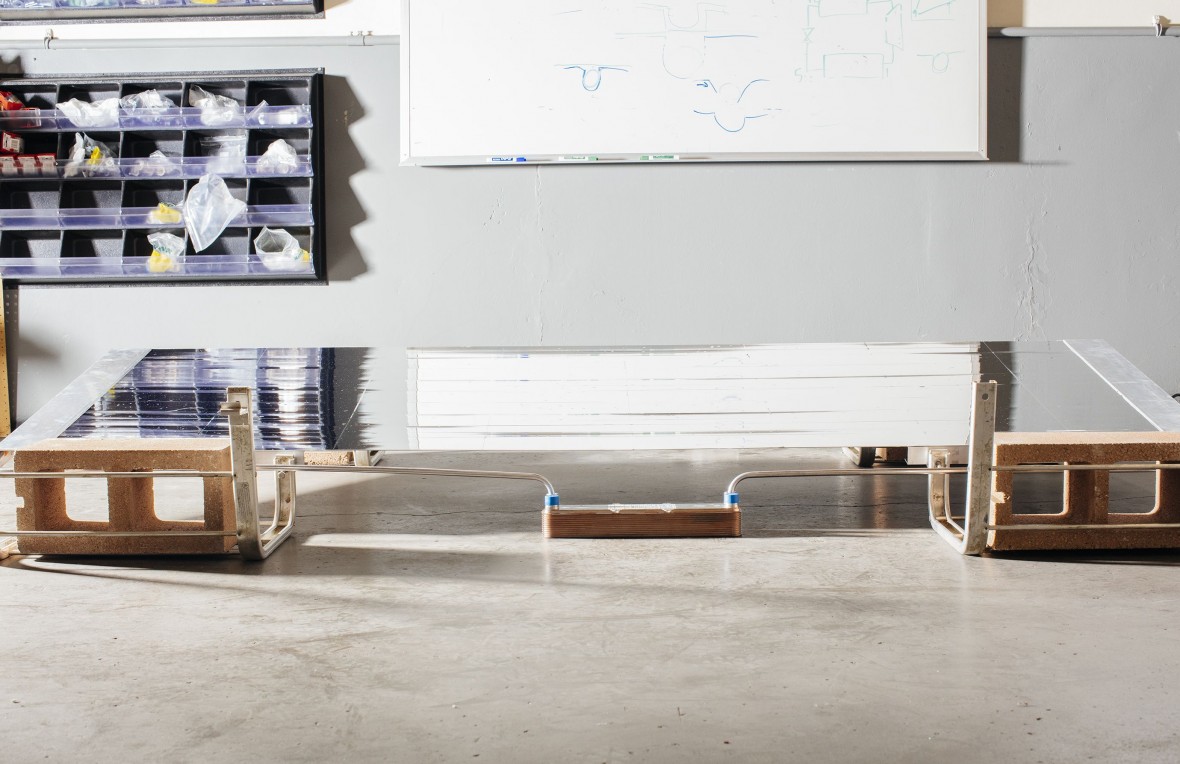
Air-conditioning and refrigeration systems produce a hot refrigerant as a normal by-product, but it must be cooled and condensed before cycling back through the machinery. In SkyCool’s panels, that process begins with the refrigerant running through a pipe and into a heat exchanger, located at the front of the panels here. 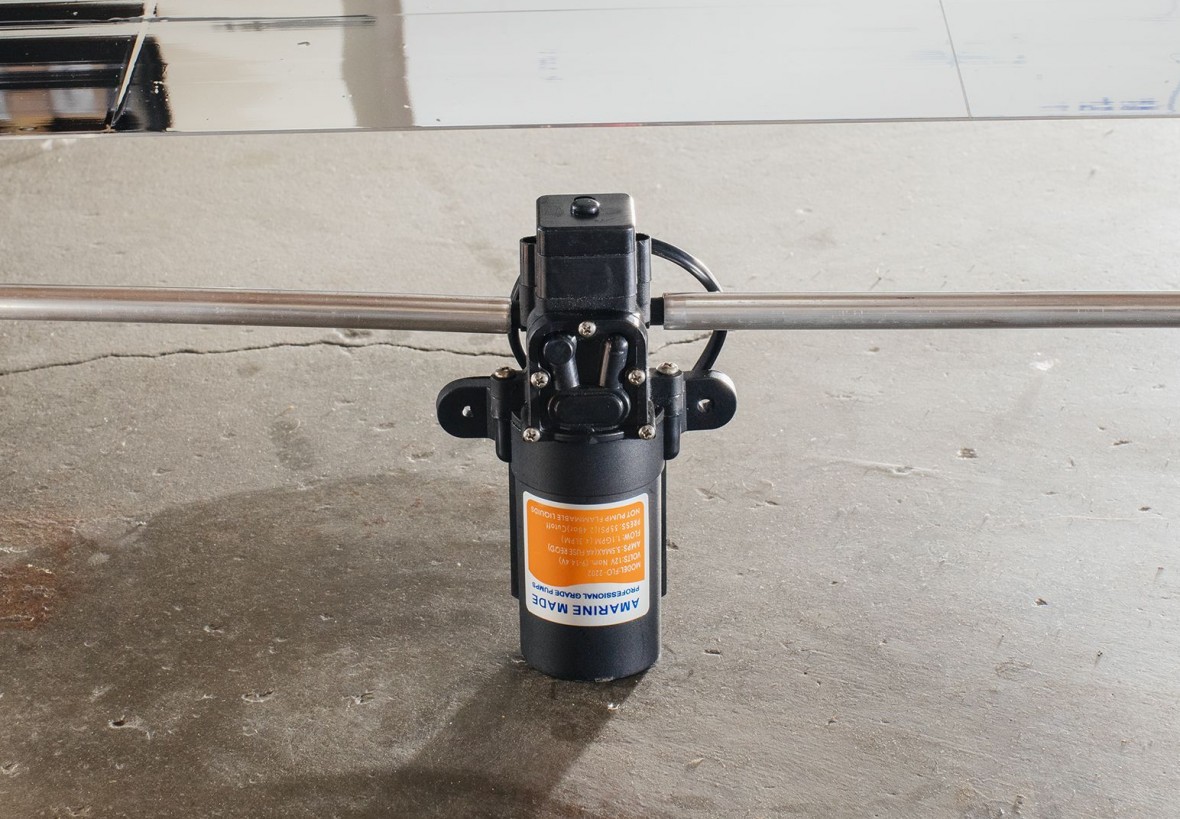
A small pump circulates a mixture of water and antifreeze through the panel system and into the other side of the heat exchanger. 
The heat from the refrigerant is transferred to the water mixture through metal plates inside the heat exchanger. The heated liquid flows out of the heat exchanger through pipes.
Leah Fasten

Steindel demonstrates how the pump and pipes attach to the system.
Leah Fasten
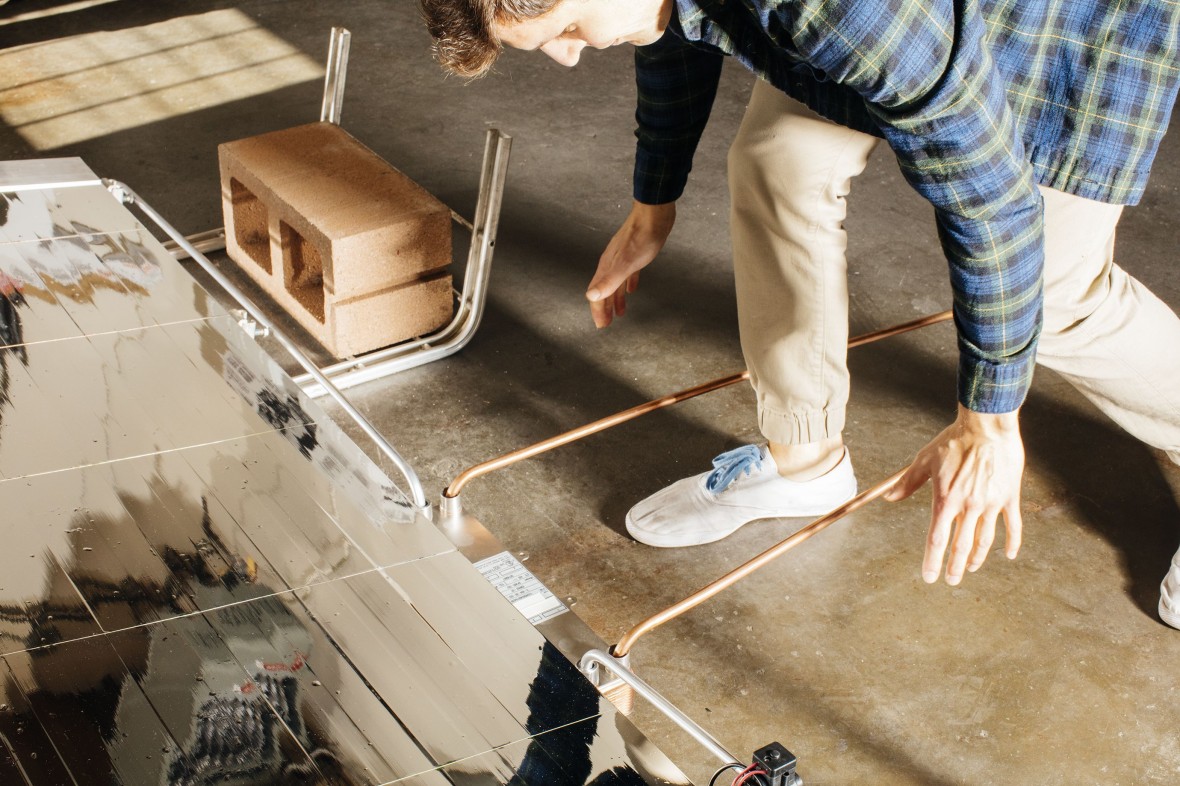
Leah Fasten

SkyCool cofounder Aaswath Raman.
Leah Fasten
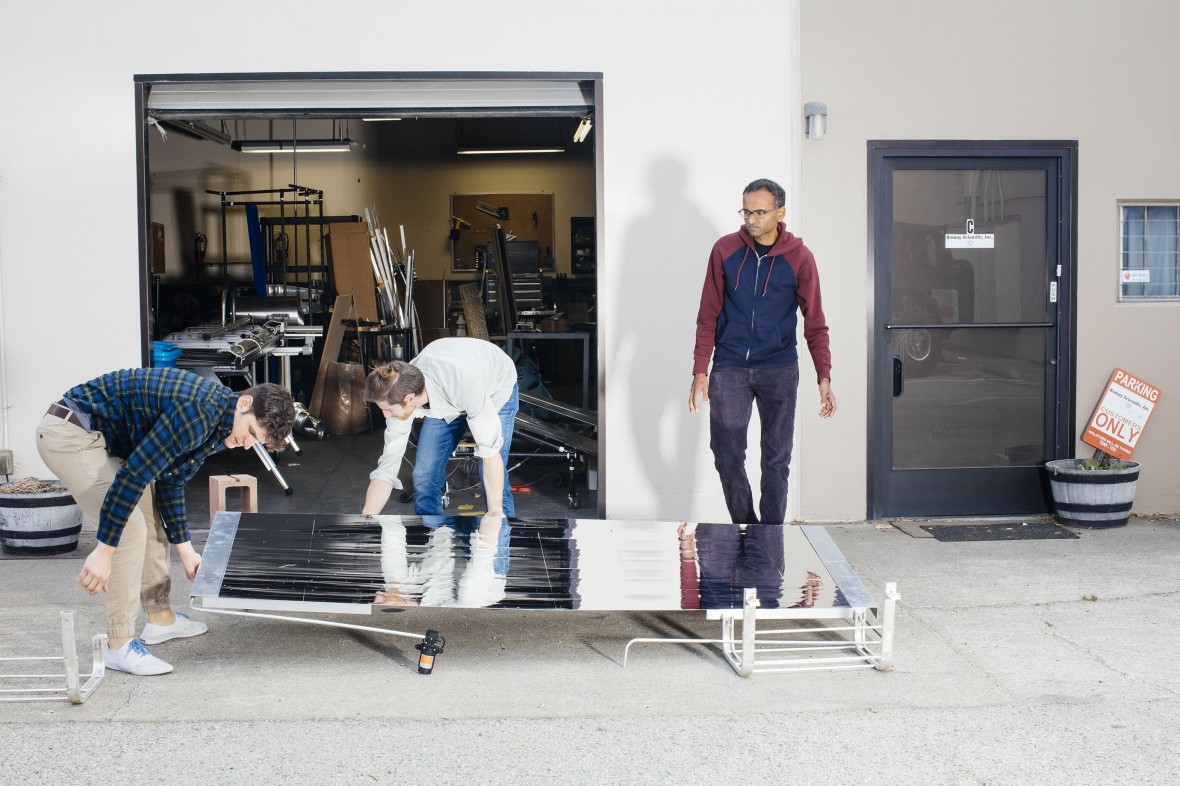
SkyCool’s panels, covered with a thin, multilayer optical film, draw heat away from the water as it flows through pipes and radiate it out. They also reflect sunlight to keep cool. Here, Steindel and Goldstein set up the panels outside as Raman looks on.
Leah Fasten
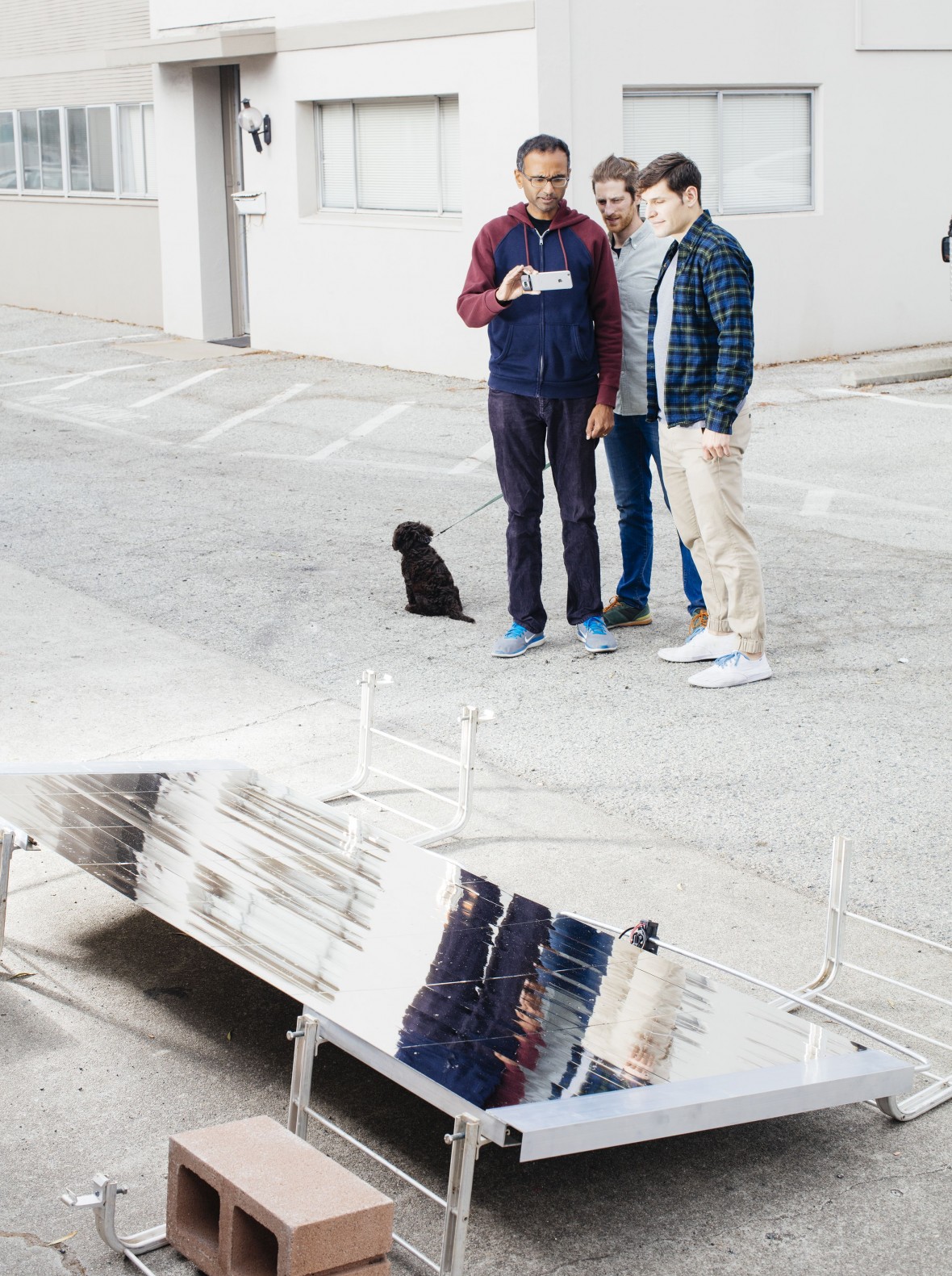
The cooled water flows back into the heat exchanger through the pipe visible here on the right of the panel. It continues flowing through the pipes, absorbing and dispersing heat in a loop. Separately, the now cooled refrigerant then flows back into the air-conditioning or refrigeration system from which it came, having achieved the necessary heat rejection.
Leah Fasten
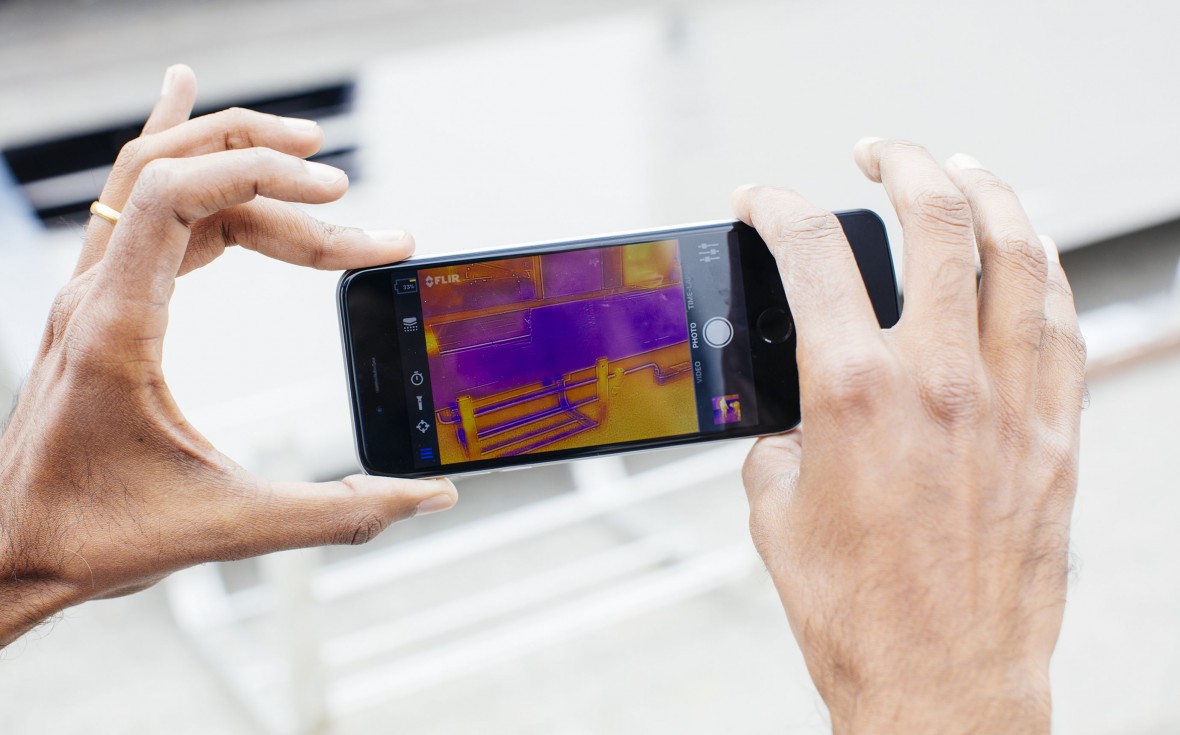
A thermal imaging iPhone app and camera attachment shows the coolness of the panels and pipes (in purple) relative to the blacktop (in orange).
Leah Fasten

Leave a Reply